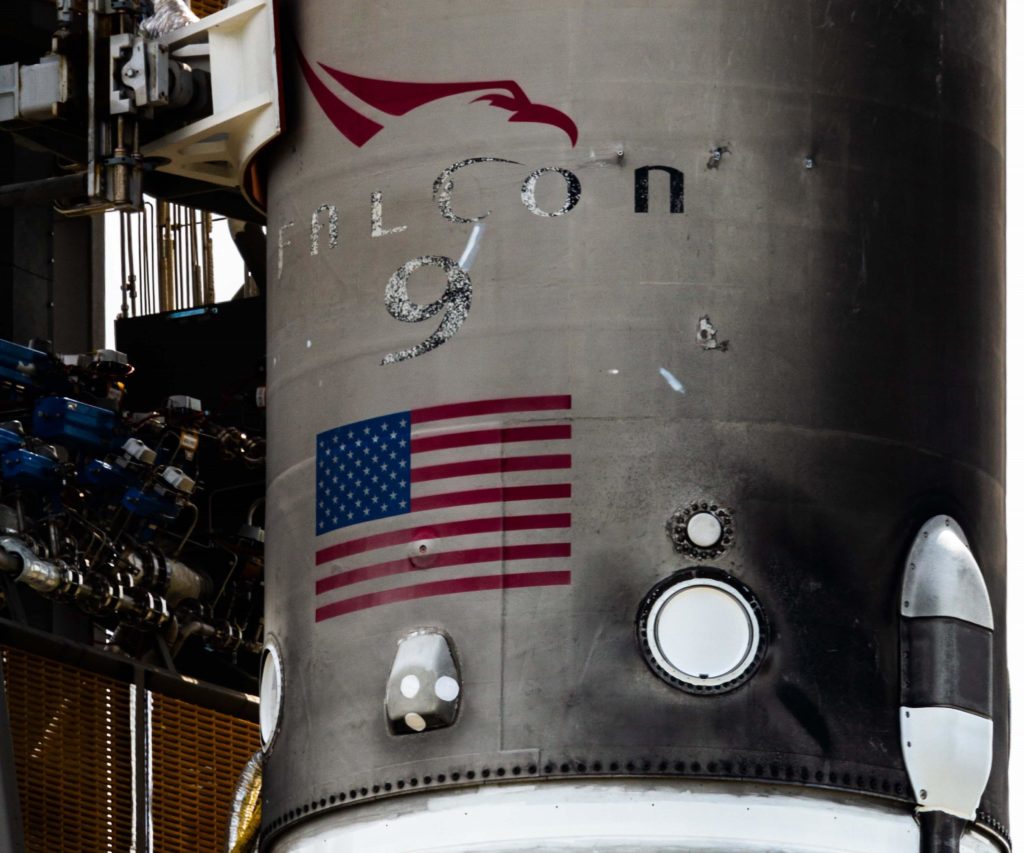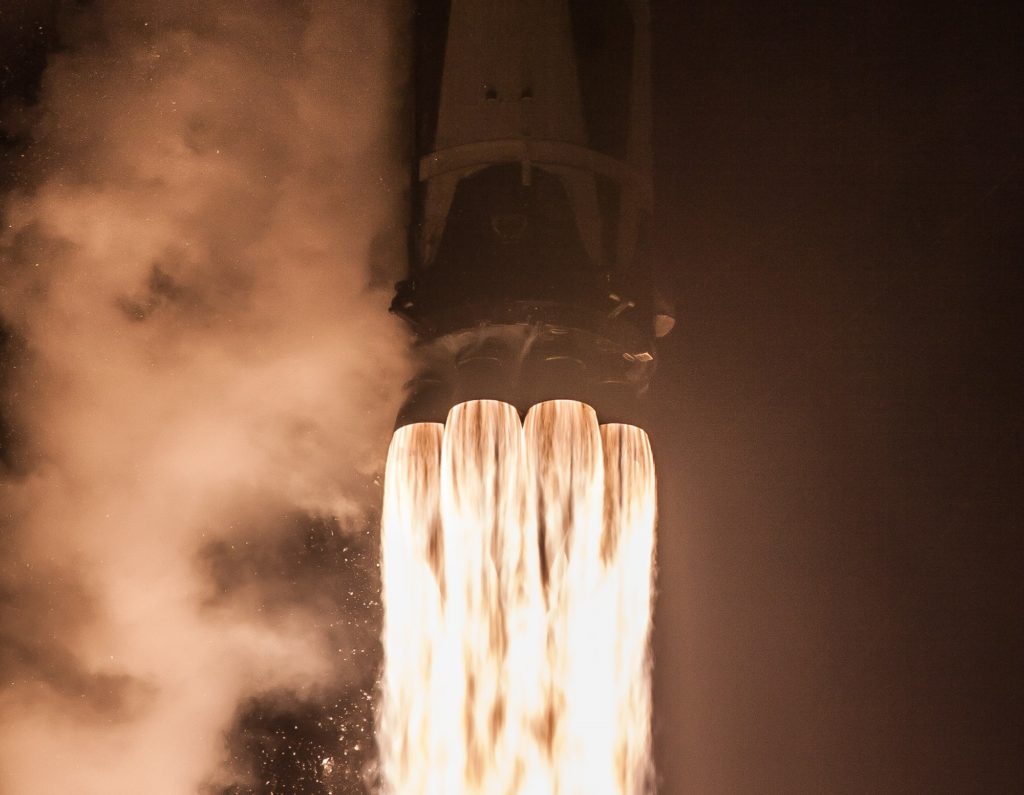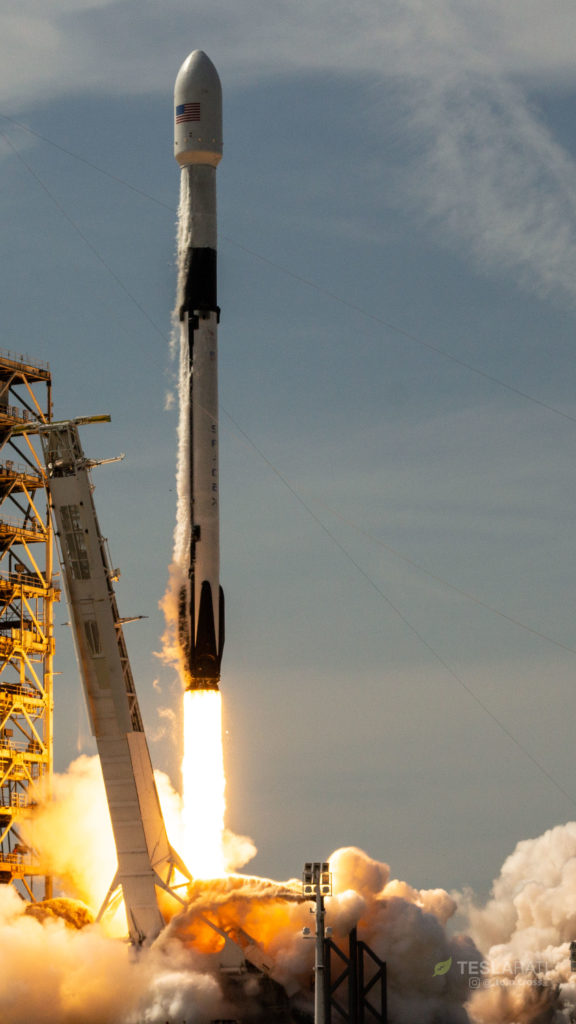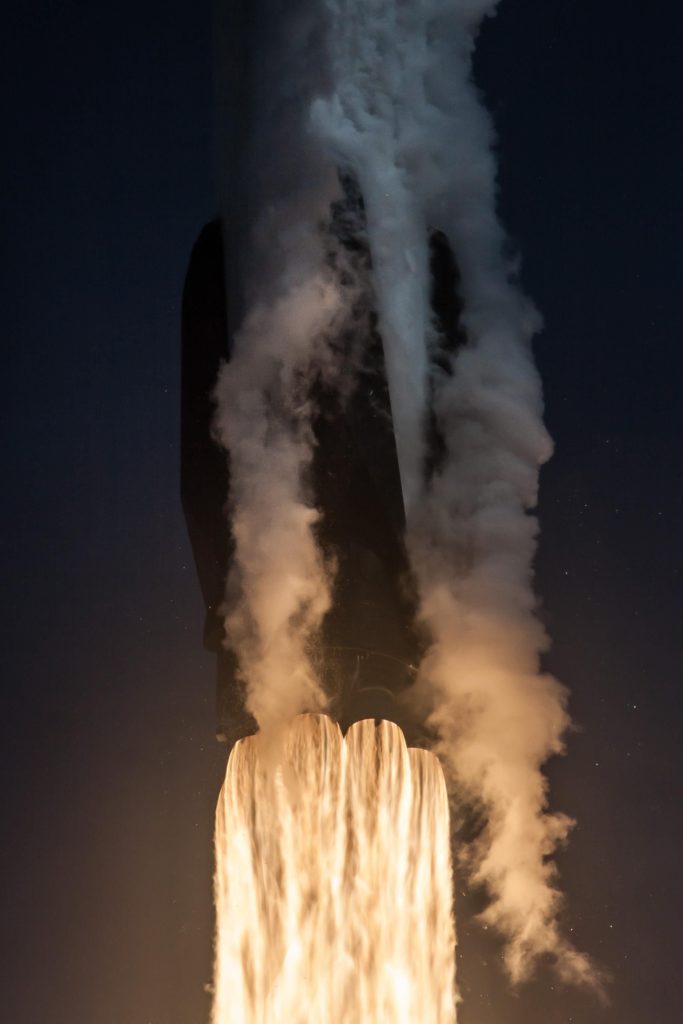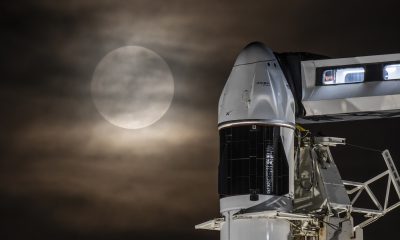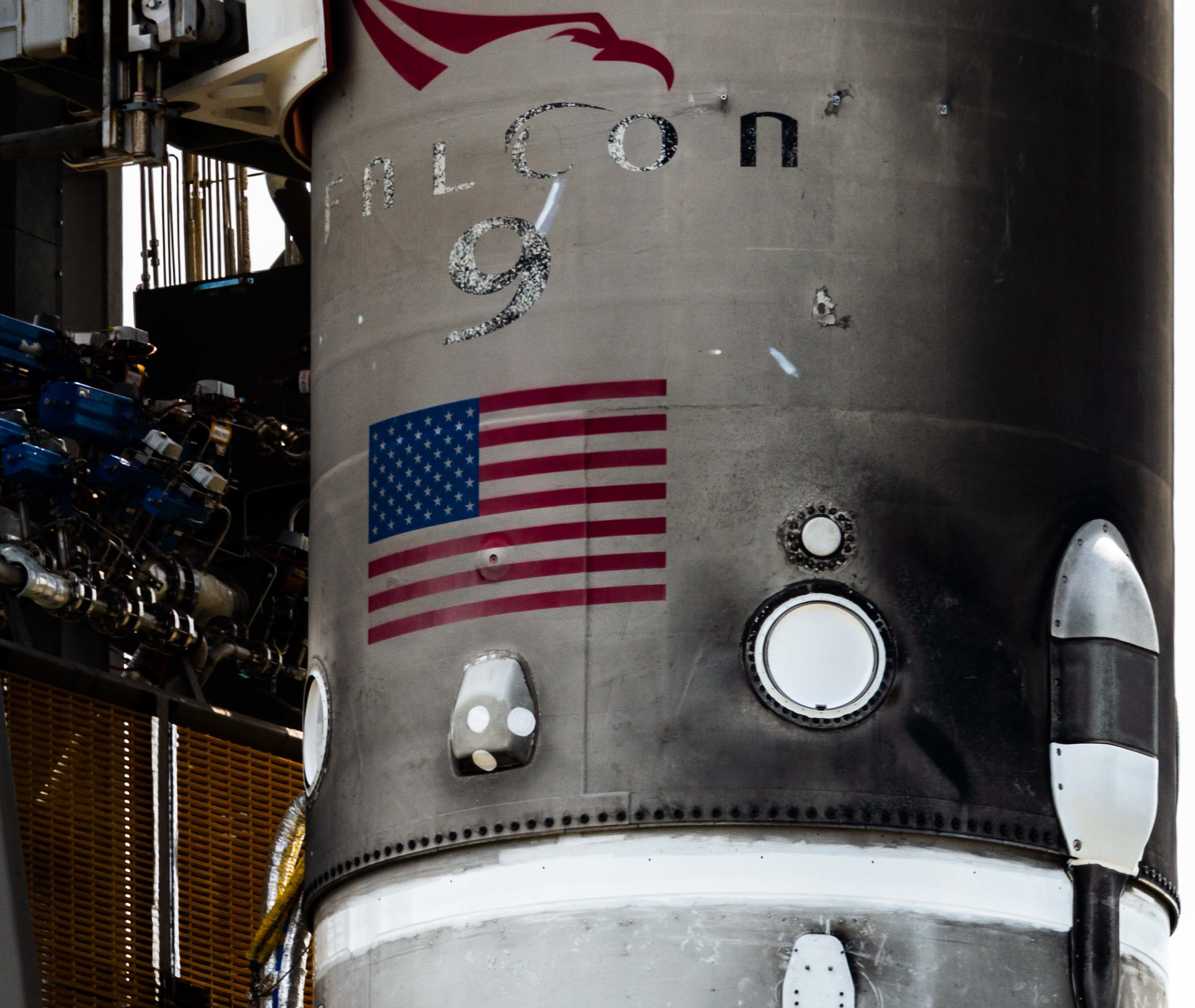

News
SpaceX will transition all launches to Falcon 9 Block 5 rockets after next mission
SpaceX’s 13th reuse of a Falcon 9 booster marked the second-to-last orbital mission of older boosters before the rocket’s highly reusable Block 5 upgrade takes over all future commercial launches.
If only for the staggering rise of SpaceX’s program of reusable rockets, June 4’s Falcon 9 launch was novel and thrilling in part because its flight-proven booster was intentionally stripped of all reuse-related hardware to bestow as much performance as possible on the mission’s large geostationary communications satellite payload, named SES-12. While this practice of intentionally expending non-Block 5 flight-proven boosters after launch has actually been fairly common over the course of the last seven Falcon 9 reflights, excluding Falcon Heavy – SpaceX is, in essence, betting heavily on the viability and success of the rocket’s quasi-final Block 5 upgrade.

SpaceX’s second to last commercial launch with a non-Block 5 Falcon 9 was completed around 1 am EST June 4. It’s once flight-proven booster ended its life in the Atlantic soon after liftoff. (Tom Cross)
Following June 4’s SES-12 launch, after which Falcon 9 S1 (B1040, previously flown on the September 2017 launch of a classified X-37B spaceplane) arced down its final parabola into the Atlantic, SpaceX has just a single commercial launch of a Block 4 booster scheduled. In fact, that launch happens to be next up on the company’s manifest: currently no earlier than (NET) June 28, CRS-15 will see the same booster (B1045) that launched NASA’s TESS exoplanet observatory scarcely ten weeks prior send a refurbished Cargo Dragon to the International Space Station. After CRS-15, which will also see its booster expended in the Atlantic, just one flightworthy Block 4 rocket will remain in SpaceX’s fleet, and that Falcon 9 booster is understood to be undergoing refurbishment for its final reflight. That mission, however, is a suborbital demonstration designed to prove that SpaceX’s Crew Dragon spacecraft can wrest its human passengers out of harm’s way in the event of a launch vehicle failure during flight (SpaceX already proved it can accomplish the same task while the rocket is still on the launch pad in a 2015 demo).
https://twitter.com/_TomCross_/status/1003509362906853376
No turning back now
While a critical path for SpaceX’s future of reliably delivering crew to orbit, its suborbital nature makes categorically distinct from past and future Falcon launches, all of which have been conducted with the intent of placing payload(s) into Earth orbit. Thus we arrive back at B1045 and CRS-15, currently scheduled as both SpaceX’s next launch and the final orbital mission before Falcon 9/Heavy Block 5 becomes the company’s only operational route to space for at least the next two years, give or take half a year. It’s thus somewhat poetic that the booster tasked with CRS-15 will easily smash SpaceX’s previous record for refurbishment (135 days) by almost a factor of two, going from drone ship recovery to reflight in as few as 71 days. Whatever it becomes, that refurbishment record will likely be broken by the first Block 5 reflight, a trend that will almost certainly continue until SpaceX reaches Musk’s fabled 24-hour turnaround, perhaps before the end of next year.
- A flight-proven Falcon 9, B1040, looking particularly well-done before its second and final launch on June 4. (Tom Cross)
- SES-12’s Block 4 booster roars into the air on its final flight. (SpaceX)
- Falcon 9 Block 5 completed its first launch on May 11, carrying the Bangabandhu-1 communications satellite to geostationary transfer orbit. (Tom Cross)
- It may not immediately look like a major departure from past versions, but Block 5 could theoretically usher in 10-100 reflights of a single rocket booster. (SpaceX)
Extrapolating from the launch company’s recent history, the culmination of CRS-15 will potentially leave SpaceX with as few as two Falcon 9 Block 5 boosters as its entire flight-ready rocket fleet, despite anywhere from 12 to 16 launches remaining on the second half of the company’s 2018 manifest. Currently standing at six boosters produced in 2018, roughly eight to be completed before the end of the year per COO and President Gwynne Shotwell (in this case likely boosters B1048-1056), an achievement that would grow the ranks of the company’s fleet of new Block 5 boosters to ten total. But, assuming a core is delivered from the Hawthorne factory every month, SpaceX will need to reuse Block 5 boosters as early as July to prevent considerable delays to their 2018 manifest, delays that would undoubtedly push multiple missions into 2019.
Here’s to hoping that the Block 5 upgrade is as incredible of a success as SpaceX has designed it to be. Follow the Teslarati team for real-time updates, glimpses behind the scenes, and photos from Teslarati’s East and West Coast photographers.
Teslarati – Instagram – Twitter
Tom Cross – Twitter
Pauline Acalin – Twitter
Eric Ralph – Twitter
Elon Musk
Tesla analysts believe Musk and Trump feud will pass
Tesla CEO Elon Musk and U.S. President Donald Trump’s feud shall pass, several bulls say.

Tesla analysts are breaking down the current feud between CEO Elon Musk and U.S. President Donald Trump, as the two continue to disagree on the “Big Beautiful Bill” and its impact on the country’s national debt.
Musk, who headed the Department of Government Efficiency (DOGE) under the Trump Administration, left his post in May. Soon thereafter, he and President Trump entered a very public and verbal disagreement, where things turned sour. They reconciled to an extent, and things seemed to be in the past.
However, the second disagreement between the two started on Monday, as Musk continued to push back on the “Big Beautiful Bill” that the Trump administration is attempting to sign into law. It would, by Musk’s estimation, increase spending and reverse the work DOGE did to trim the deficit.
Every member of Congress who campaigned on reducing government spending and then immediately voted for the biggest debt increase in history should hang their head in shame!
And they will lose their primary next year if it is the last thing I do on this Earth.
— Elon Musk (@elonmusk) June 30, 2025
President Trump has hinted that DOGE could be “the monster” that “eats Elon,” threatening to end the subsidies that SpaceX and Tesla receive. Musk has not been opposed to ending government subsidies for companies, including his own, as long as they are all abolished.
How Tesla could benefit from the ‘Big Beautiful Bill’ that axes EV subsidies
Despite this contentious back-and-forth between the two, analysts are sharing their opinions now, and a few of the more bullish Tesla observers are convinced that this feud will pass, Trump and Musk will resolve their differences as they have before, and things will return to normal.
ARK Invest’s Cathie Wood said this morning that the feud between Musk and Trump is another example of “this too shall pass:”
BREAKING: CATHIE WOOD SAYS — ELON AND TRUMP FEUD “WILL PASS” 👀 $TSLA
She remains bullish ! pic.twitter.com/w5rW2gfCkx
— TheSonOfWalkley (@TheSonOfWalkley) July 1, 2025
Additionally, Wedbush’s Dan Ives, in a note to investors this morning, said that the situation “will settle:”
“We believe this situation will settle and at the end of the day Musk needs Trump and Trump needs Musk given the AI Arms Race going on between the US and China. The jabs between Musk and Trump will continue as the Budget rolls through Congress but Tesla investors want Musk to focus on driving Tesla and stop this political angle…which has turned into a life of its own in a roller coaster ride since the November elections.”
Tesla shares are down about 5 percent at 3:10 p.m. on the East Coast.
Elon Musk
Tesla scrambles after Musk sidekick exit, CEO takes over sales
Tesla CEO Elon Musk is reportedly overseeing sales in North America and Europe, Bloomberg reports.

Tesla scrambled its executives around following the exit of CEO Elon Musk’s sidekick last week, Omead Afshar. Afshar was relieved of his duties as Head of Sales for both North America and Europe.
Bloomberg is reporting that Musk is now overseeing both regions for sales, according to sources familiar with the matter. Afshar left the company last week, likely due to slow sales in both markets, ending a seven-year term with the electric automaker.
Tesla’s Omead Afshar, known as Elon Musk’s right-hand man, leaves company: reports
Afshar was promoted to the role late last year as Musk was becoming more involved in the road to the White House with President Donald Trump.
Afshar, whose LinkedIn account stated he was working within the “Office of the CEO,” was known as Musk’s right-hand man for years.
Additionally, Tom Zhu, currently the Senior Vice President of Automotive at Tesla, will oversee sales in Asia, according to the report.
It is a scramble by Tesla to get the company’s proven executives over the pain points the automaker has found halfway through the year. Sales are looking to be close to the 1.8 million vehicles the company delivered in both of the past two years.
Tesla is pivoting to pay more attention to the struggling automotive sales that it has felt over the past six months. Although it is still performing well and is the best-selling EV maker by a long way, it is struggling to find growth despite redesigning its vehicles and launching new tech and improvements within them.
The company is also looking to focus more on its deployment of autonomous tech, especially as it recently launched its Robotaxi platform in Austin just over a week ago.
However, while this is the long-term catalyst for Tesla, sales still need some work, and it appears the company’s strategy is to put its biggest guns on its biggest problems.
News
Tesla upgrades Model 3 and Model Y in China, hikes price for long-range sedan
Tesla’s long-range Model 3 now comes with a higher CLTC-rated range of 753 km (468 miles).
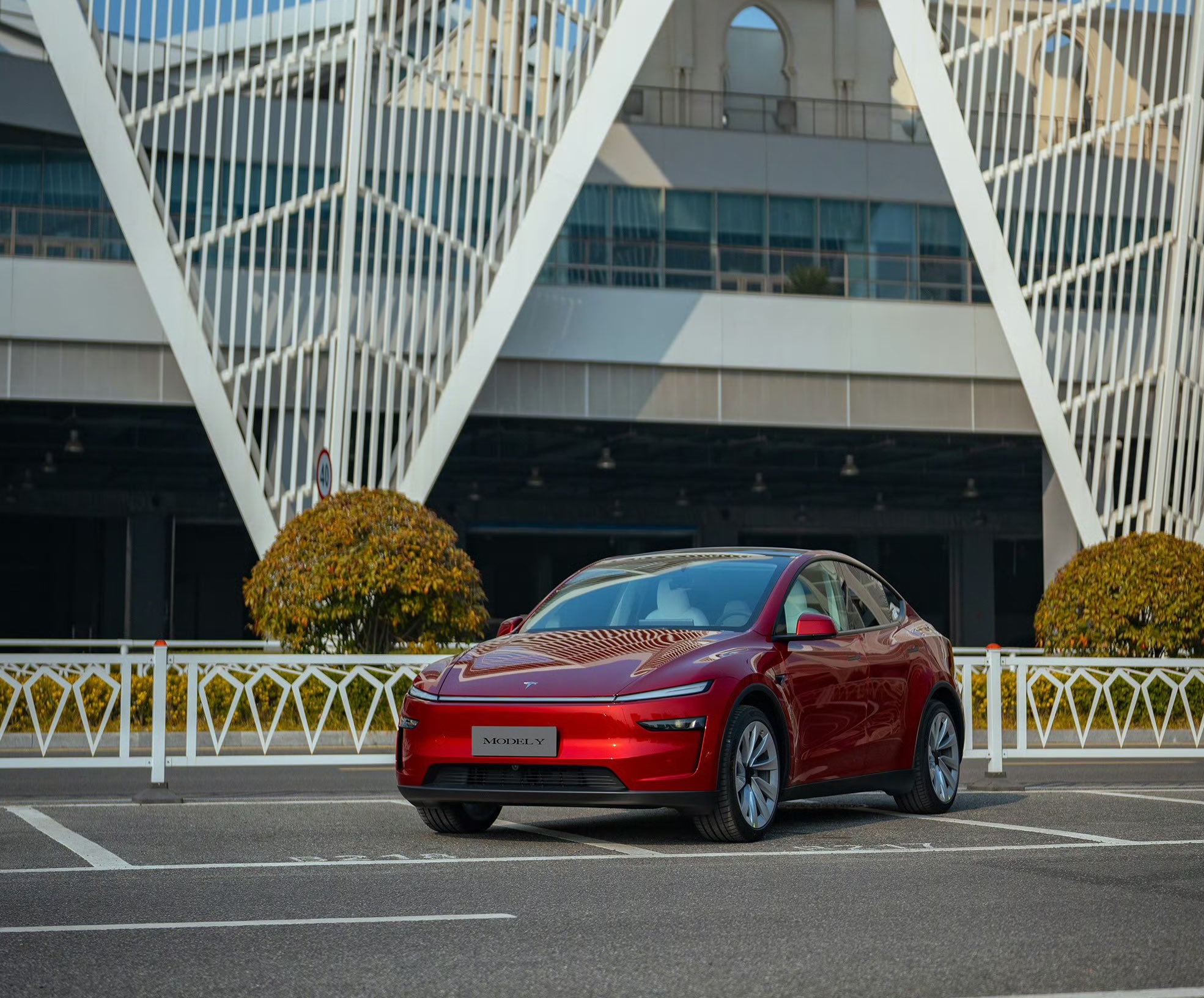
Tesla has rolled out a series of quiet upgrades to its Model 3 and Model Y in China, enhancing range and performance for long-range variants. The updates come with a price hike for the Model 3 Long Range All-Wheel Drive, which now costs RMB 285,500 (about $39,300), up RMB 10,000 ($1,400) from the previous price.
Model 3 gets acceleration boost, extended range
Tesla’s long-range Model 3 now comes with a higher CLTC-rated range of 753 km (468 miles), up from 713 km (443 miles), and a faster 0–100 km/h acceleration time of 3.8 seconds, down from 4.4 seconds. These changes suggest that Tesla has bundled the previously optional Acceleration Boost for the Model 3, once priced at RMB 14,100 ($1,968), as a standard feature.
Delivery wait times for the long-range Model 3 have also been shortened, from 3–5 weeks to just 1–3 weeks, as per CNEV Post. No changes were made to the entry-level RWD or Performance versions, which retain their RMB 235,500 and RMB 339,500 price points, respectively. Wait times for those trims also remain at 1–3 weeks and 8–10 weeks.
Model Y range increases, pricing holds steady
The Model Y Long Range has also seen its CLTC-rated range increase from 719 km (447 miles) to 750 km (466 miles), though its price remains unchanged at RMB 313,500 ($43,759). The model maintains a 0–100 km/h time of 4.3 seconds.
Tesla also updated delivery times for the Model Y lineup. The Long Range variant now shows a wait time of 1–3 weeks, an improvement from the previous 3–5 weeks. The entry-level RWD version maintained its starting price of RMB 263,500, though its delivery window is now shorter at 2–4 weeks.
Tesla continues to offer several purchase incentives in China, including an RMB 8,000 discount for select paint options, an RMB 8,000 insurance subsidy, and five years of interest-free financing for eligible variants.
-

 Elon Musk1 day ago
Elon Musk1 day agoTesla investors will be shocked by Jim Cramer’s latest assessment
-

 News6 days ago
News6 days agoTesla Robotaxi’s biggest challenge seems to be this one thing
-

 News2 weeks ago
News2 weeks agoTesla’s Grok integration will be more realistic with this cool feature
-

 Elon Musk2 weeks ago
Elon Musk2 weeks agoElon Musk slams Bloomberg’s shocking xAI cash burn claims
-

 News2 weeks ago
News2 weeks agoTesla China roars back with highest vehicle registrations this Q2 so far
-

 News2 weeks ago
News2 weeks agoTexas lawmakers urge Tesla to delay Austin robotaxi launch to September
-

 News2 weeks ago
News2 weeks agoTesla dominates Cars.com’s Made in America Index with clean sweep
-

 Elon Musk1 week ago
Elon Musk1 week agoFirst Look at Tesla’s Robotaxi App: features, design, and more

